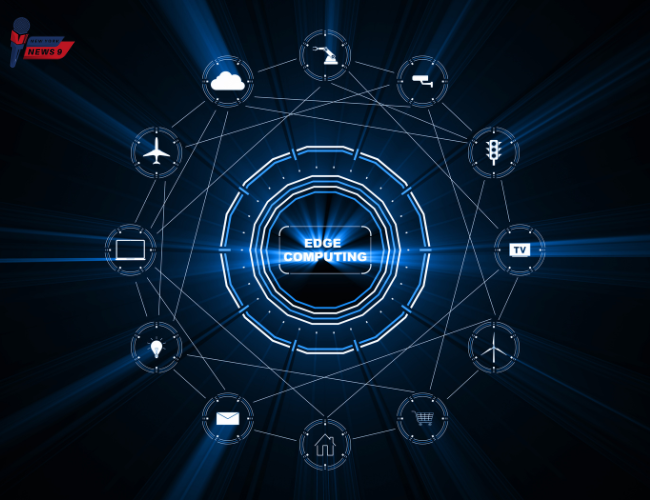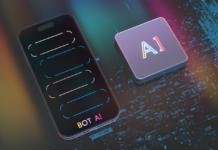A promising solution to address these challenges and unlock new possibilities across various industries.
In today’s fast-paced digital landscape, where data is generated at an unprecedented rate, traditional cloud computing models face challenges in terms of latency, bandwidth constraints, and the need for real-time data analysis. To overcome these limitations, a transformative computing paradigm has emerged: edge computing.
What is Edge Computing?
Edge computing is a distributed computing approach that moves data processing and analysis closer to the edge of the network, where data is generated. Rather than sending all data to a centralized cloud server for processing, edge computing performs computation on local devices or edge servers. This decentralized approach reduces latency, conserves bandwidth, and enables real-time data processing and analytics.
The Edge: Where Data Meets Computation
At the core of edge computing is the notion that data should be processed and analyzed as close to its point of origin as possible. This means that devices such as sensors, IoT devices, autonomous vehicles, and even smartphones can perform complex computations on the data they generate. By processing data at the edge, organizations can derive valuable insights in real time, enabling faster decision-making, improved efficiency, and enhanced user experiences.
Benefits of Edge Computing
1. Reduced Latency
In applications where real-time or near-real-time processing is crucial, edge computing minimizes the time it takes for data to travel from the source to a remote server and back. This reduced latency enables faster response times, enhances user experiences, and supports time-critical applications such as autonomous vehicles, smart grids, and industrial automation.
2. Bandwidth Optimization
Transmitting vast amounts of data to the cloud for processing can strain network bandwidth and incur significant costs. Edge computing alleviates this burden by processing and filtering data at the edge, only sending relevant information to the cloud. This optimization helps reduce network congestion, lowers data transfer costs, and enhances overall network efficiency.
3. Enhanced Security and Privacy
Edge computing addresses privacy and security concerns by keeping sensitive data local. Instead of transmitting all data to a central cloud server, edge devices can perform data processing and analysis on-site, minimizing the risk of data breaches and ensuring compliance with data protection regulations.
4. Offline Capabilities
Edge computing enables devices to operate autonomously even when disconnected from the cloud. This feature is particularly valuable in remote or resource-constrained environments where consistent connectivity may not be guaranteed. Edge devices can continue to perform critical operations, store and process data locally, and synchronize with the cloud once the connection is restored.
Applications of Edge Computing
The potential applications of edge computing are vast and span numerous industries:
1. Manufacturing
Edge computing enables real-time monitoring and control of industrial processes, predictive maintenance, and quality control, resulting in increased efficiency, reduced downtime, and cost savings.
2. Healthcare
Edge computing facilitates remote patient monitoring, wearable devices, and real-time health data analysis, empowering healthcare providers with timely insights, improving patient care, and enabling early intervention.
3. Smart Cities
Edge computing supports smart city initiatives by enabling real-time monitoring of infrastructure, optimizing traffic management, enhancing public safety through video analytics, and improving resource allocation.
4. Retail
Edge computing enables personalized shopping experiences, inventory management, and real-time analytics to optimize store layouts, inventory levels, and customer interactions.
Edge Computing vs Cloud Computing
Cloud computing and Edge computing are two complementary computing paradigms, each with its own strengths and characteristics. While both serve the purpose of processing and storing data, there are distinct differences between the two approaches. Let’s explore some key points of comparison:
1. Data Processing Location
- Edge Computing
In edge computing, data processing occurs at or near the source of data generation, on devices located at the edge of the network. This enables real-time or near-real-time processing and reduces latency.
- Cloud Computing
In cloud computing, data processing takes place in centralized data centers located remotely from the data source. Data is transmitted to the cloud for analysis and storage, which can introduce latency depending on network conditions.
2. Latency and Response Time
- Edge Computing
Edge computing offers lower latency as data processing occurs locally. This is advantageous for applications requiring real-time or near-real-time responses, such as autonomous vehicles, industrial automation, and augmented reality experiences.
- Cloud Computing
Cloud computing introduces latency due to the need to transmit data to remote servers for processing. While cloud infrastructure can handle complex computations, the latency incurred may not be suitable for time-critical applications.
3. Bandwidth Usage
- Edge Computing
Edge computing optimizes bandwidth usage by performing data processing and filtering at the edge. Only relevant data or summarized insights are transmitted to the cloud, reducing network congestion and data transfer costs.
- Cloud Computing
Cloud computing typically requires substantial bandwidth for transmitting large volumes of data to centralized servers for processing. This can strain network resources, especially in scenarios with limited bandwidth availability or high data volumes.
4. Scalability and Resources
- Edge Computing
Edge computing leverages local devices and servers, distributing the processing workload across the network edge. This allows for scalability based on the number of edge devices available and their computing capabilities.
- Cloud Computing
Cloud computing offers virtually unlimited scalability by leveraging powerful data centers with vast computational resources. Cloud services can dynamically allocate resources based on demand, allowing for rapid scaling up or down as needed.
5. Security and Privacy
- Edge Computing
Edge computing can enhance security and privacy by keeping sensitive data local. Data processing and analysis occur on-site, reducing the risk of data breaches during transit. This can be advantageous in industries with stringent security and privacy requirements.
- Cloud Computing
Cloud computing requires transmitting data to remote servers, which can raise concerns about data privacy and security. While cloud providers implement robust security measures, some organizations may have regulatory or compliance requirements that necessitate data control at the edge.
6. Offline Capability
- Edge Computing
Edge devices can operate autonomously even when disconnected from the cloud. Local processing and storage capabilities enable continued functionality and critical operations during periods of limited or no connectivity.
- Cloud Computing
Cloud computing heavily relies on network connectivity. Thus, when the connection is lost, certain cloud-dependent services may become unavailable until the connection is restored.
Take away
Edge computing represents a paradigm shift in computing architecture, allowing organizations to process and analyze data closer to the source, unlocking real-time insights, reducing latency, and optimizing bandwidth usage. With its ability to enhance speed, efficiency, and enable autonomous operation, edge computing is set to revolutionize industries ranging from manufacturing and healthcare to smart cities and retail. Embracing edge computing opens up a world of possibilities, empowering organizations to harness the full potential of the data-driven era we live in.











